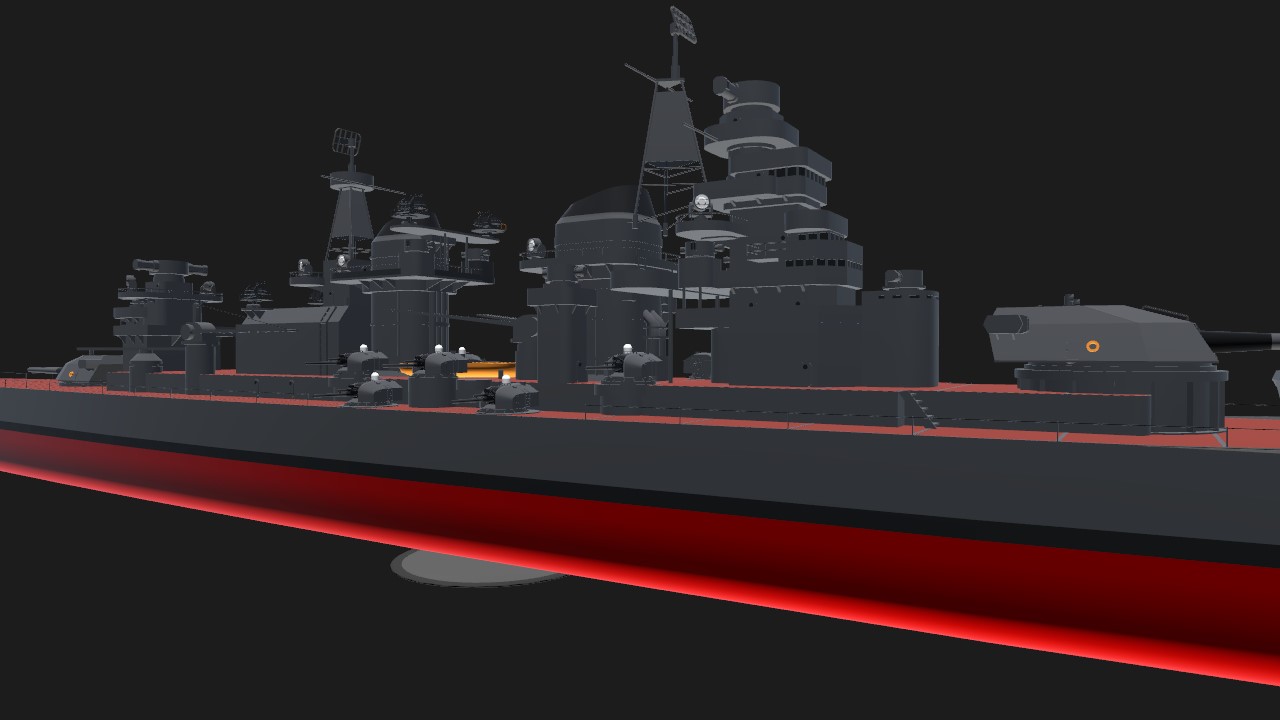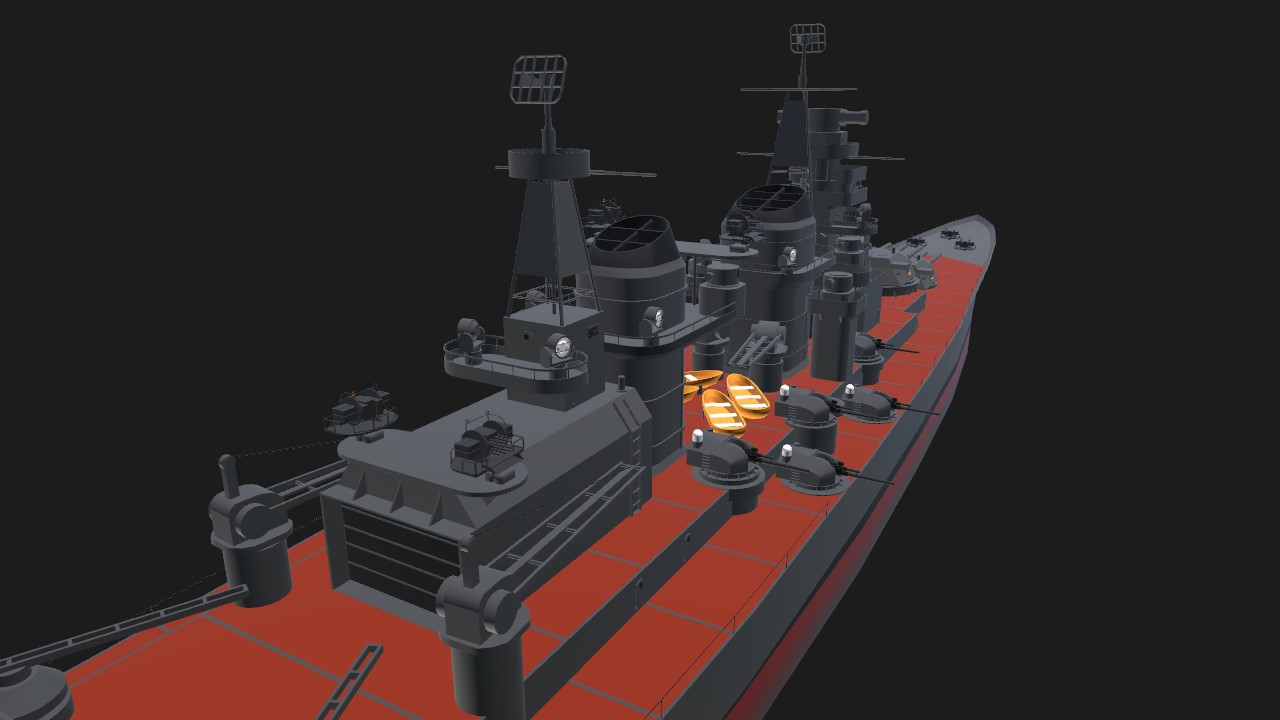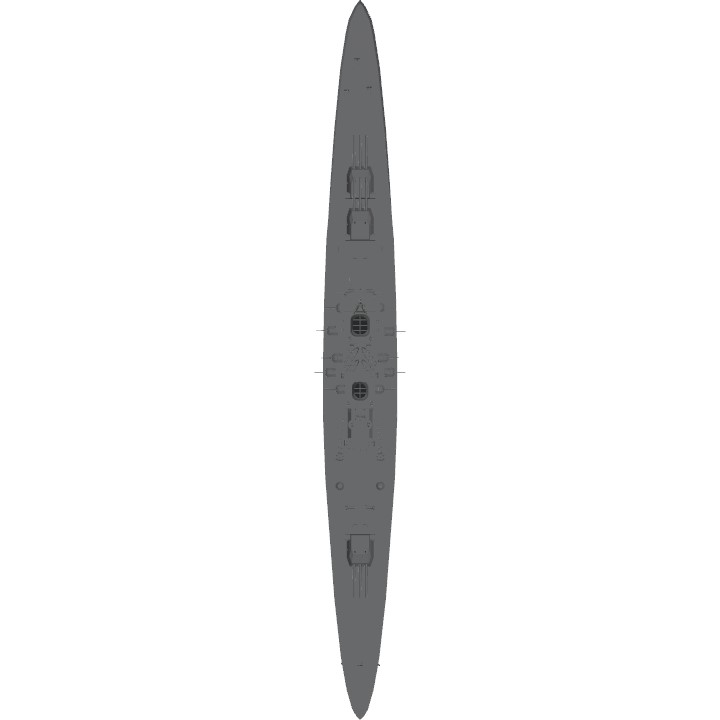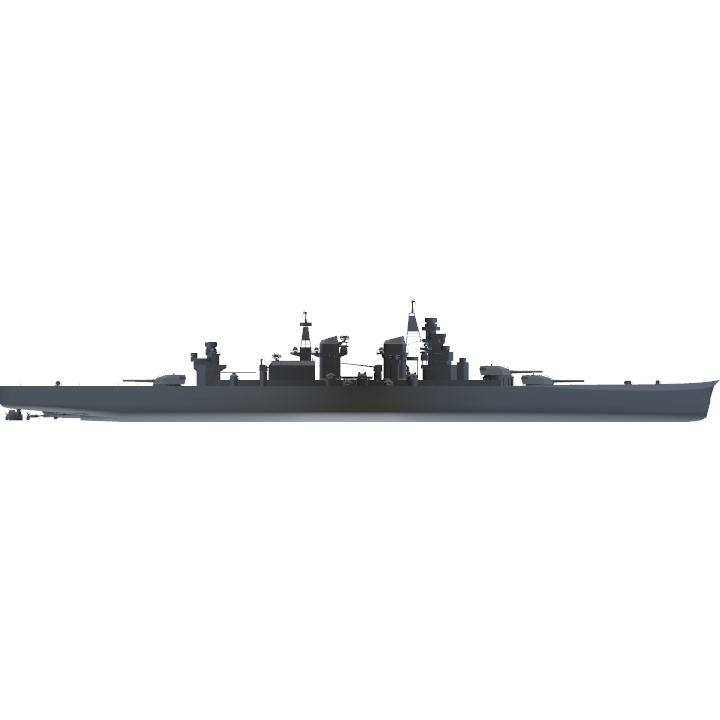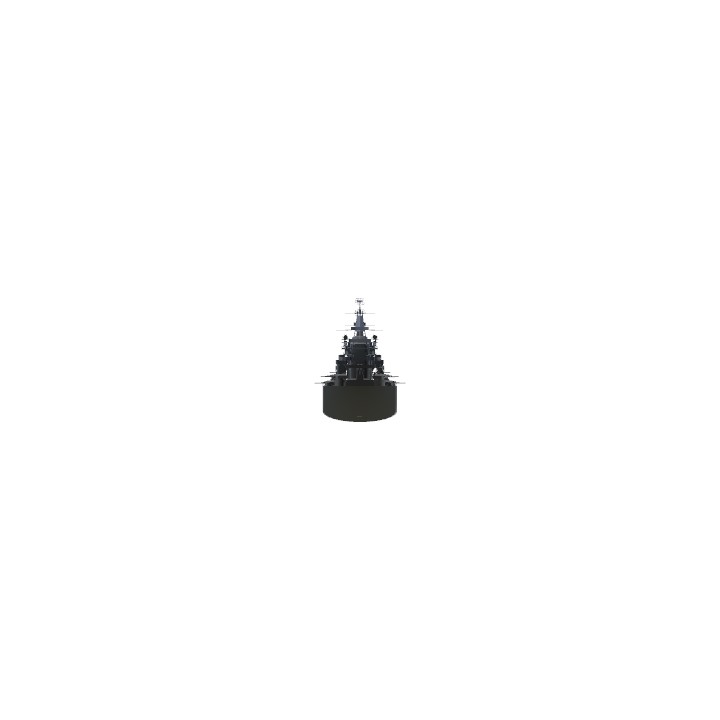Lore of HMS Glasgow (1943)
Origins and Design
In the mid-1930s, with the rising threat from Axis powers, the British Admiralty initiated an ambitious naval expansion program. One of the keystones of this program was the fast battleship HMS Glasgow, a vessel designed to be the epitome of speed, firepower, and resilience. Launched in 1943, HMS Glasgow was an engineering marvel, combining heavy armament with unprecedented mobility.
Specifications
Displacement: 45,000 tons (standard) Length: 780 feet Beam: 110 feet Draught: 34 feet
Propulsion:
4 geared steam turbines
8 boilers
160,000 shp
Maximum speed: 32 knots
Armament:
Primary Armament: 3 × triple 16-inch/50 caliber Mark I naval guns (one forward, two aft)
Secondary Armament: 8 × single 6-inch/45 caliber guns
Anti-Aircraft Armament: 10 × 8-barrelled 40 mm QF 1 pdr Pom-Pom AA cannons
Armor:
Belt: 14 inches
Deck: 6 inches
Turrets: 16 inches
Conning tower: 12 inches
Operational History
Commissioning and Trials:
HMS Glasgow was commissioned on May 15, 1943, at the Clydebank shipyards in Scotland. The ship's trials in the harsh North Sea weather conditions proved her mettle, showcasing impressive agility and firepower. Her speed, rivaling that of contemporary cruisers, allowed her to outmaneuver many potential threats.
Battle of the Atlantic:
Shortly after commissioning, HMS Glasgow was deployed to the North Atlantic to counter the German Kriegsmarine's U-boat threat and surface raiders. Her first significant engagement came in September 1943, during Operation Bernhard, where she played a crucial role in escorting vital convoys to Britain. Her 16-inch guns proved decisive in a nighttime engagement against the German battleship Tirpitz, where Glasgow’s superior fire control and rapid maneuvering forced Tirpitz to retreat, securing the convoy's safe passage.
Mediterranean Theater:
In early 1944, HMS Glasgow was reassigned to the Mediterranean Fleet to support the Allied invasion of Italy. She provided naval gunfire support during the Anzio landings, her massive guns decimating Axis fortifications and providing critical support to the advancing Allied troops. Her presence in the Mediterranean deterred the Italian Navy from attempting major operations, ensuring Allied naval supremacy in the region.
Pacific Campaign:
By late 1944, HMS Glasgow was transferred to the Pacific Theater. She joined the British Pacific Fleet and participated in the Battle of Okinawa, providing anti-aircraft cover and shore bombardment. Her Pom-Pom AA cannons were particularly effective against kamikaze attacks, protecting not only herself but also surrounding vessels.
Post-War Service and Legacy
After the war, HMS Glasgow continued to serve with distinction. She was modernized in the late 1940s to adapt to new technologies and threats, including improved radar systems and anti-aircraft defenses. During the early stages of the Cold War, she was a symbol of British naval power, frequently patrolling contested waters and participating in numerous NATO exercises.
HMS Glasgow was decommissioned in 1960 and transformed into a museum ship, moored at her namesake city. She stands today as a monument to naval engineering and wartime valor, preserving the legacy of those who served aboard her and the critical role she played during one of history's most tumultuous periods.
Ag-1 front turret‘s
Ag-2 rear turret
Ag-6+7 105mm side guns
Ag-8 beacon lights
Specifications
General Characteristics
- Predecessor Unused Battleship Model
- Created On iOS
- Wingspan 99.7ft (30.4m)
- Length 787.4ft (240.0m)
- Height 135.9ft (41.4m)
- Empty Weight 505,934lbs (229,488kg)
- Loaded Weight 573,873lbs (260,304kg)
Performance
- Horse Power/Weight Ratio 0.148
- Wing Loading 2,538.8lbs/ft2 (12,395.5kg/m2)
- Wing Area 226.0ft2 (21.0m2)
- Drag Points 79353
Parts
- Number of Parts 2847
- Control Surfaces 0
- Performance Cost 7,394

